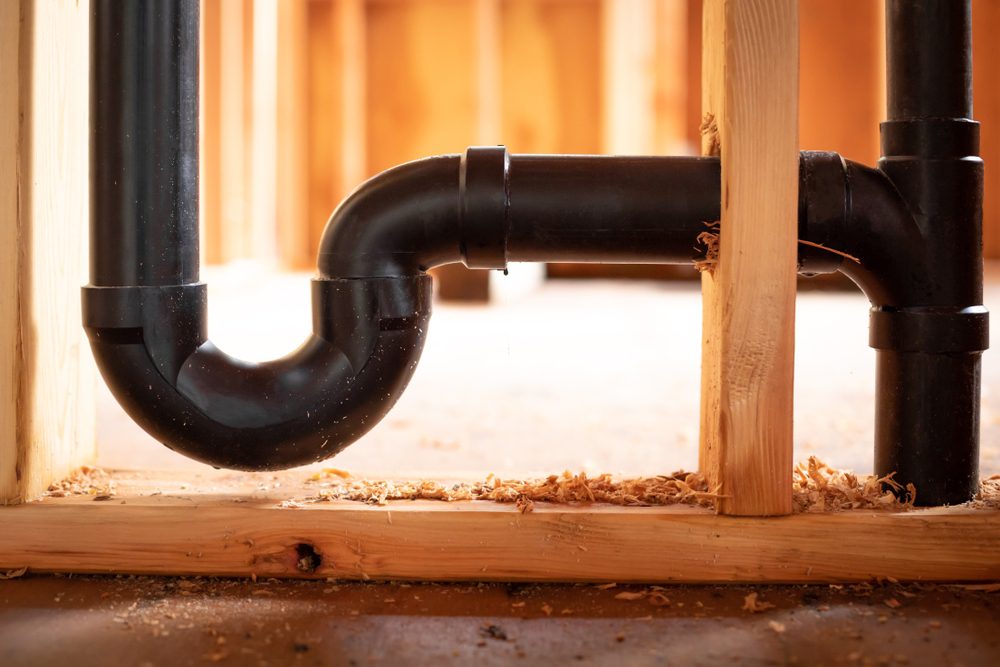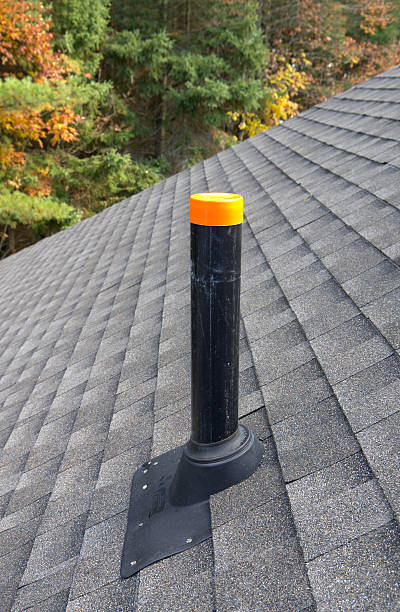Here down the page you might get a bunch of exceptional resources concerning What Are Plumbing Vents and Why Are They Important?.

Proper air flow in pipes systems is frequently neglected, yet it is critical for preserving the capability and safety and security of your home's pipes. Ventilation aids regulate air pressure, protect against the accumulation of hazardous gases, and make certain the efficient elimination of waste. In this overview, we will certainly explore the relevance of correct pipes ventilation, how it works, and the advantages it offers your pipes system.
Just How Air Flow Works in Plumbing Solutions
Atmospheric Pressure Regulation
Proper ventilation maintains well balanced atmospheric pressure within the pipes system. When water streams through pipelines, it displaces air. Without ample air flow, this displacement can create adverse stress, resulting in slow drains pipes or siphoning of water from traps, which can cause undesirable smells to permeate into the home.
Preventing Sewage System Gas Accumulation
Among one of the most crucial features of plumbing vents is to prevent sewer gases, such as methane and hydrogen sulfide, from building up within the home. These gases can position major health threats and are highly combustible. Vent pipes enable these gases to run away safely outdoors.
Aiding in Waste Removal
Ventilation aids in the efficient removal of wastewater by protecting against airlocks in the drainage system. When air can flow easily with the vents, it permits water and waste to flow smoothly through the pipes, minimizing the threat of obstructions and back-ups.
Advantages of Correct Air Flow
Boosted System Performance
Properly aerated pipes systems operate much more effectively, with fewer clogs, faster draining, and less pressure on the pipelines. This performance prolongs the life expectancy of the plumbing system.
Improved Air Quality
By preventing sewage system gases from entering your home, appropriate ventilation contributes to much better indoor air quality, making your living atmosphere healthier and much more comfortable.
Protecting Against Water Damage
Ample air flow aids protect against water from being siphoned out of catches, which can cause sewer gases getting in the home and triggering water damages with time.
Steps to Make Certain Appropriate Air Flow
Consulting Plumbing Codes
Constantly consult regional plumbing codes when designing or customizing your pipes system. These codes offer the needed standards for proper venting and guarantee your system fulfills safety requirements.
Routine Examination and Maintenance
Regular assessments can aid recognize possible air flow issues before they become major problems. Maintenance jobs, such as cleansing vent pipes and checking for clogs, are important for keeping the system in good working order.
Specialist Setup
For brand-new setups or significant modifications, it's smart to employ an expert plumbing. They have the experience to make certain the air flow system is appropriately created and mounted according to code.
Comprehending Ventilation in Pipes
Air flow in plumbing refers to the network of pipelines that enable air to flow via the drain system. These vents serve numerous functions, including managing air pressure within the pipelines, protecting against sewer gases from going into the home, and helping in the smooth circulation of wastewater.
Sorts Of Pipes Vents
Main Stack Vent
The main stack vent, likewise referred to as the air vent pile, is the main air vent in a plumbing system. It extends from the primary drainpipe line up via the roofing, enabling gases to escape and fresh air to go into the system.
Branch Vent
Branch vents attach to the major pile air vent and serve private fixtures, such as sinks, toilets, and showers. These vents ensure that each component has ample ventilation to function properly.
Air Admission Valve (AAV).
An Air Admittance Shutoff (AAV) is a one-way valve that permits air to go into the plumbing system without the demand for a standard vent pipeline extending with the roofing system. AAVs are generally utilized in renovations or locations where installing a common air vent is unwise.
Indicators of Poor Ventilation in Plumbing.
Slow Draining Fixtures.
If your sinks, bathtubs, or commodes are draining slowly, maybe an indicator of poor ventilation. Insufficient air circulation can develop a vacuum result, making it tough for water to drain appropriately.
Gurgling Sounds.
Gurgling sounds coming from drains are typically a result of air being drawn through water traps as a result of negative pressure in the pipes. This is a clear indication of not enough ventilation.
Unpleasant Odors.
Sewer odors inside your home are a red flag that your plumbing system is not appropriately aerated. This might suggest that sewage system gases are not being adequately vented outside, leading to potentially hazardous problems.
Usual Ventilation Mistakes.
Inadequate Vent Sizing.
Using small air vent pipelines can cause bad air flow and pressure inequalities in the system. It's essential to make use of vents that fulfill the certain requirements of your plumbing system.
Improper Vent Positioning.
Putting vents too much from the fixtures they serve can lower their effectiveness. Correct positioning ensures that air can move openly and efficiently through the system.
Disregarding Code Requirements.
Building ordinance offer particular standards for plumbing air flow. Neglecting these codes can result in a system that stops working to operate correctly and might lead to expensive fixings or health hazards.
Final thought.
Correct ventilation is an important component of any kind of pipes system, ensuring that it functions successfully and securely. By comprehending the value of air flow, acknowledging the indications of bad air flow, and taking actions to keep your system, you can protect against pricey issues and protect your home's air quality.
4 Things You Should Know About Your Plumbing Vents
What Plumbing Vents Are
Also called a vent stack, a plumbing vent is a vertical pipe attached to your drain line that runs through your roof. The plumbing vent pipe, or plumbing air vent, removes gas and odors from your plumbing system and allows fresh air to enter the pipes, helping the water to flow out of the drain pipes.
What Plumbing Vents Do
Plumbing vents have two basic functions. One of which is to allow unpleasant smelling wastewater and sewer gasses to escape your plumbing system instead of entering your home. Plumbing vent pipes are typically located on roofs, away from windows, to ensure the fumes exit the home completely.
The other function of the plumbing vent is to move fresh air into your plumbing system. This helps move water through every plumbing fixture in your house, like toilets and sink drains. Think of the way in which you need to let a little air into the bottle as you pour soda in order to make the drink flow smoothly.
Different Types of Plumbing Vents
True vent: This is the most common vent option. In simplest terms, a true vent is a vertical pipe attached to your drain line that exits through the roof. They often function as the main vent that other fixtures can connect to. Re-vent pipe or auxiliary vent: Attached to the drain line near specific plumbing fixtures, re-vent pipes run up and over to connect to the main vent. Common vent: Two plumbing fixtures installed on opposite sides of a wall are typically tied into the vent stack using something known as a sanitary cross. Wet vent: This venting option operates as a drain pipe and a vent at the same time. Wet vent drainage systems drain water from one fixture while venting the air from another. Although they’ve been used for over 100 years, wet vent systems have only recently been added to the plumbing code in many areas. If you’re planning on installing one in a bathroom remodel, make sure you check your local code prior to construction. Loop vent: For free-standing fixtures like kitchen island sinks, loop vents are ideal. These vent pipes run under the floor, rise from the P-trap, and create a loop inside the cabinet sink. Air admittance valve: An AAV is a one-way mechanical valve typically installed at the site of the plumbing fixture. AAVs allow venting to occur without having to tie into a larger venting system. They’re ideal for venting fixtures where you aren’t able to easily connect to an existing vent system. Common Plumbing Vent Issues
Although vent pipes typically don’t have water flowing through them, they’re still subject to many typical plumbing issues. For example, clogs are one of the most common problems associated with sewer vent pipes. If your vent pipe gets clogged, all of your plumbing fixtures tied into the vent stack will be affected.
A sink with a slow drain that bubbles and gurgles or a strong sewage smell around your toilet are both indicators that your toilet vent pipe is clogged. Because most vent pipes exit through the roof, old leaves, twigs or even a bird’s nest could be clogging the pipe.
Clogs in your vent pipe system cause a buildup of negative pressure, meaning that water won’t be able to flow out of your home very well. It’s similar to putting your finger over the opening of a straw to trap water inside. When you remove your finger, the water is able to flow out of the straw.
If you suspect you have any blockage in your vent, make sure you have a professional come examine the situation. Left unchecked, a blocked air vent can lead to other costly repairs, like leaks and sediment buildup.
Under Pressure
Pipe vents are essential aspects of a home’s plumbing system. Owning a home means learning about all sorts of things you never put much thought into before. But by understanding as much as you can about the important systems of your home, you can keep those budgets intact and those anxiety levels low.
https://www.homeserve.com/en-us/blog/home-improvement/plumbing-vents/

I was made aware of that editorial on from an associate on another domain. Sharing is nice. Helping people is fun. Many thanks for going through it.
Or Book Technician Here